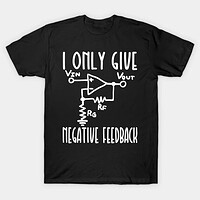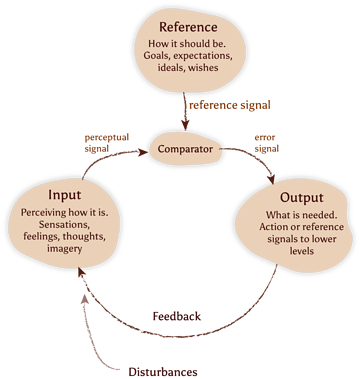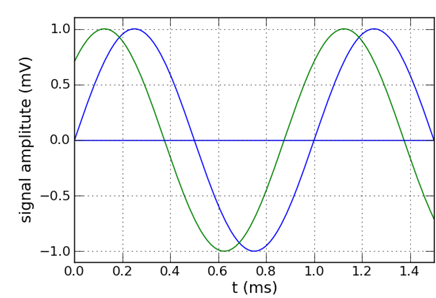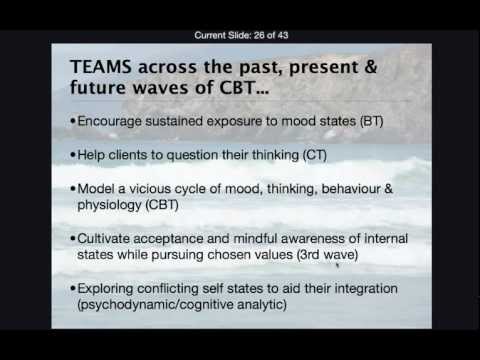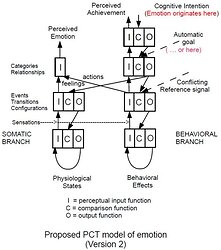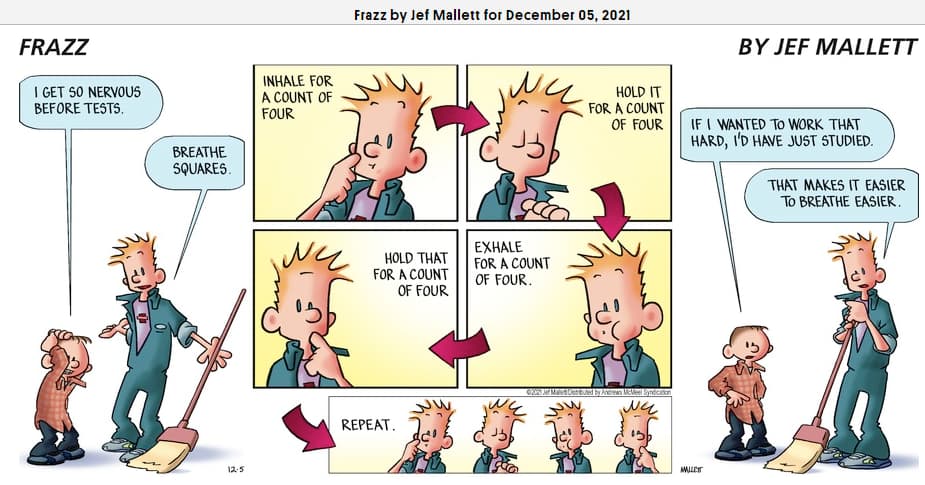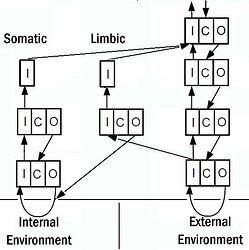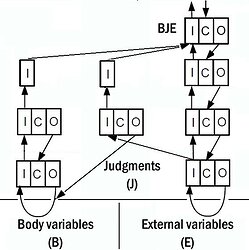I wrote this on my site (in Dutch: Stop: je maakt het alleen maar erger! – Perceptual Control Theory & Method of Levels). English version: Stop: you’re only making it worse! – Perceptual Control Theory & Method of Levels
Curious what you think: do I get the mechanics right? Does this resonate with your experience? I should note the actual experience is not just positive feedback, it’s also conflict, other ways to try to control, reorganization. But the idea that things turn bad really quickly, is interesting from the positive feedback point of view.
Positive feedback: stop it, you’re only making it worse!
“I only give negative feedback” is printed on a shirt my friend gave me to wear to my classes. A nerd joke, on a nerd-style T-shirt, which doesn’t fit well, obviously. But what it says is correct. I only give negative feedback. I read my students’ reports, notice where things go wrong, and provide feedback with the aim of reducing the error in the next version. That is the principle of negative feedback: you do what you can to reduce the error, the difference between how it is and how it should be. The negative feedback loop is how controlsystems work and how all the controlsystems we have - or rather which we are - continually reduce their error and achieve their goals.
I always get a hard-to-suppress, cringe-like feeling when I hear colleagues talking about how important it is as a teacher to give positive feedback. “Don’t do it!” I’d cry. But I hold back: even without wearing a nerd shirt, I’m all too often the one who knows better. But I’m right anyway: it’s a stupid plan to give positive feedback.
Positive feedback is the reverse of negative feedback. Where negative feedback makes the error smaller, positive feedback makes the error larger. Everything you do increases the difference between how it is and how it should be. That creates a huge problem in no time.
You know that shrill howling sound of a microphone at a conference? The speaker speaks into the microphone, and instead of hearing the speaker, you hear an increasingly loud, higher-pitched sound that makes all further communication impossible. This positive feedback is caused by the fact that the output of the microphone, the amplified sound from the speakers, is fed back as the input of the microphone. The microphone amplifies its own amplified sound in a loop - it amplifies and amplifies and amplifies. The first thing you do is pull the plug so that the sound stops. Next, you need to make sure that the microphone only picks up the speaker’s voice, and not the amplified sound. By connecting the plugs better, or by not standing next to the speakers while you speak.
Figure 1. Simplified image of a control system.
Positive feedback loops are actually always undesirable. After all, in which situation do you want a perception to spiral out of control? Even if you fall into a positive feedback loop of happiness, be careful not to become manic. Positive feedback means loss of control: with positive feedback you will never succeed in keeping a perception at a desired value.
Yet you regularly experience positive feedback. Some examples:
- If you have a rising sense of panic, and you try not to panic, this trying not to panic often makes it worse. You notice that it doesn’t work, that makes you panic more, which makes you less successful in not panicking, so that your goals get even further out of sight and you panic about them even more.
- When my son is bored, I often say: go play with Lego. Draw something. Practice guitar. But all those things make it worse: he doesn’t feel like it, the feeling of boredom only increases. Also without my ‘help’, anything he invents with the aim of reducing boredom only makes him feel more annoyed because he finds that he doesn’t feel like doing anything.
- I had a conflict with someone I worked with. It wasn’t really about anything important, it seemed to me mainly incomprehension and miscommunication. I tried to save the collaboration, but everything I did to make sure he understood me (explain, argue, inquire) only made the misunderstanding worse. The more vigorously I argued, the greater the misunderstanding and thus the problem became.
In all these situations you can do the same as with the microphone: Pull the plug, to make sure you don’t experience that self-amplifying error signal. You can stop the panic by taking a cold shower; stop the boredom by sending your child into the garden, stop the quarrel by ending the collaboration.
But that still doesn’t get you to the root of the problem. To do that, you need to know what started that positive feedback loop. Just as it happens with a microphone because the microphone picks up the wrong signal, you get positive feedback loops - those wholly out of control situations - as you try to control the wrong perception.
- If you’re trying to control panic, that means your controlled variable is the panic level . You want to get that down to a low level of panic. However, your current level is high. Therefore you experience error, and that error is experienced as the feeling of panic. You’re trying to control something that shouldn’t be under control itself (the error signal), so that’s why it doesn’t work. It helps to look for something that you can control. Your breathing. Your sense of sensations in your arms or legs. One of the other many goals you are trying to achieve. Have a cup of tea, walk around the block. That’s how you eventually end the panic.
- If you try to control boredom, and it doesn’t work, you feel even more bored. You can’t control that bored feeling yourself. The feeling itself is the error that arises when it is not possible to gain control over certain important perceptions. The problem will resolve itself if you succeed in pursuing a different, attainable goal. Pet the cat. Feed the cat. Do something and notice that you feel like it.
- Now when I look back at the problem with my colleague, I can see how his plan to pull the plug on the partnership is an attempt to stop the positive feedback - it just kept getting worse. By stopping the collaboration, the cycle of increasing misunderstanding stops. But when we stopped there, the goals we had together have also been lost. If this happens to you, and there’s still room to save the collaboration, it’s helpful to get the system back on track by controlling the controlled variables. The signal we controlled - the misunderstanding - is apparently itself a form of error. It is the result of another control process that is not going well. So that’s what you have to look for: what are you trying to control that doesn’t work? What goals do you want to achieve? Once you have that clear and the technology is back in order, you can plug it back in.
You recognize a situation of positive feedback because it is getting worse. Conflict keeps you stuck: you don’t achieve your goals, no matter how hard you try, but it doesn’t get out of hand either. The condition remains the same regardless of the effort. When it comes to positive feedback, things spiral out of control, and everything you do seems to make it worse.
In a conflict, it is important to stand still, focus on the relevant aspects of the problem and let the reorganization process do its work. Then you can find a way to move on from higher goals. You also have to think about positive feedback. First by acting quickly and pulling the plug. Then by checking what you’re trying to control, and finding out that you’re trying to control something that you can’t control at all. You try to keep the error at a certain level, and it doesn’t work that way. The error - the unpleasant feeling, the feeling of panic, the incomprehension between two parties - is itself part of the control system, but does not give you a foothold to improve control.
You have to look for a goal that you can achieve in order to regain control. If your microphone is buzzing, make sure you’re getting the right input: the voice, not the amp. In case of panic: make sure you focus on a small, achievable target, then you will regain control. In case of boredom: keep messing around until you find something you feel like. If there is pain in a relationship, misunderstanding and frustration, talk about what is important to both of you and focus on that.
Because I ended up in a positive feedback loop, I noticed how little control I had when things went wrong. But I also learned how this type of control works. If you try to keep the error signal under control without having an eye for the higher goals that matter, then things go wrong. That makes it important to give all emotions (error signals) room to do their job in difficult situations. If you try to keep the error small, any deviation from it is a sign of failure, increasing the error again. So focus your attention on the higher goals, and give your feelings the space to show you the direction.
